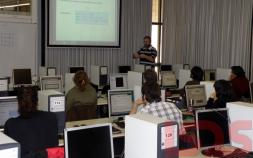OUR MISSION
LSDS is a scientific-technique service unit of Autònoma University of Barcelona that aims to provide efficient ways to disseminate and transfer knowledge generated by UAB research, from the Social Sciences Modeling and Computer Simulation domain to a broad public and clients -institutions, enterprises, researchers-. The service offers the UAB expertise in tasks of consultancy, training, dissemination and development of social simulation computer models, a.k.a., "artificial societies in silico”, in order to provide validated explanatory answers to those questions raised by our clients.

OUR VISION
Although social phenomena produced by the aggregate social behavior may appear to be very complex, this complexity may actually be generated by a small set of simple mechanisms -physical, psychological, social- that rules the multiple interactions between a great number of individual "agents". Modeling and studying any system by building a computer simulation using a number of “software agent” units, ruled by simple sets of rules, that communicate and interact each other to generate the expected aggregated behavior is the core aim of Generative Science.
(from R. Feynman's blackboard, 1988)
OUR METHODOLOGY
At LSDS-H we use a generative social science approach for building computer running models. A social simulation model is a computational system specifically designed to generate the aggregated structure and behavior of a particular social group. In can be calibrated -i.e. initialized by replicating attributes taken from the actual components of the human social system that it models- and can generate, as an emerging result, patterns of simulated aggregate social behavior along time. These models can reproduce interaction processes between the "virtual agents" that compose the model, and also between these agents and their environment -ecological, institutional and cultural-.

a bridge between disciplines
OUR DOMAIN
The scope of social simulation research is any kind of social system where autonomous individual agents make decisions and perform actions, in a context of institutional, cultural and environmental constraints (natural resources, animals, other humans, machines, normative systems, or any hybridation).
[+] More information at the “Resources” section.




